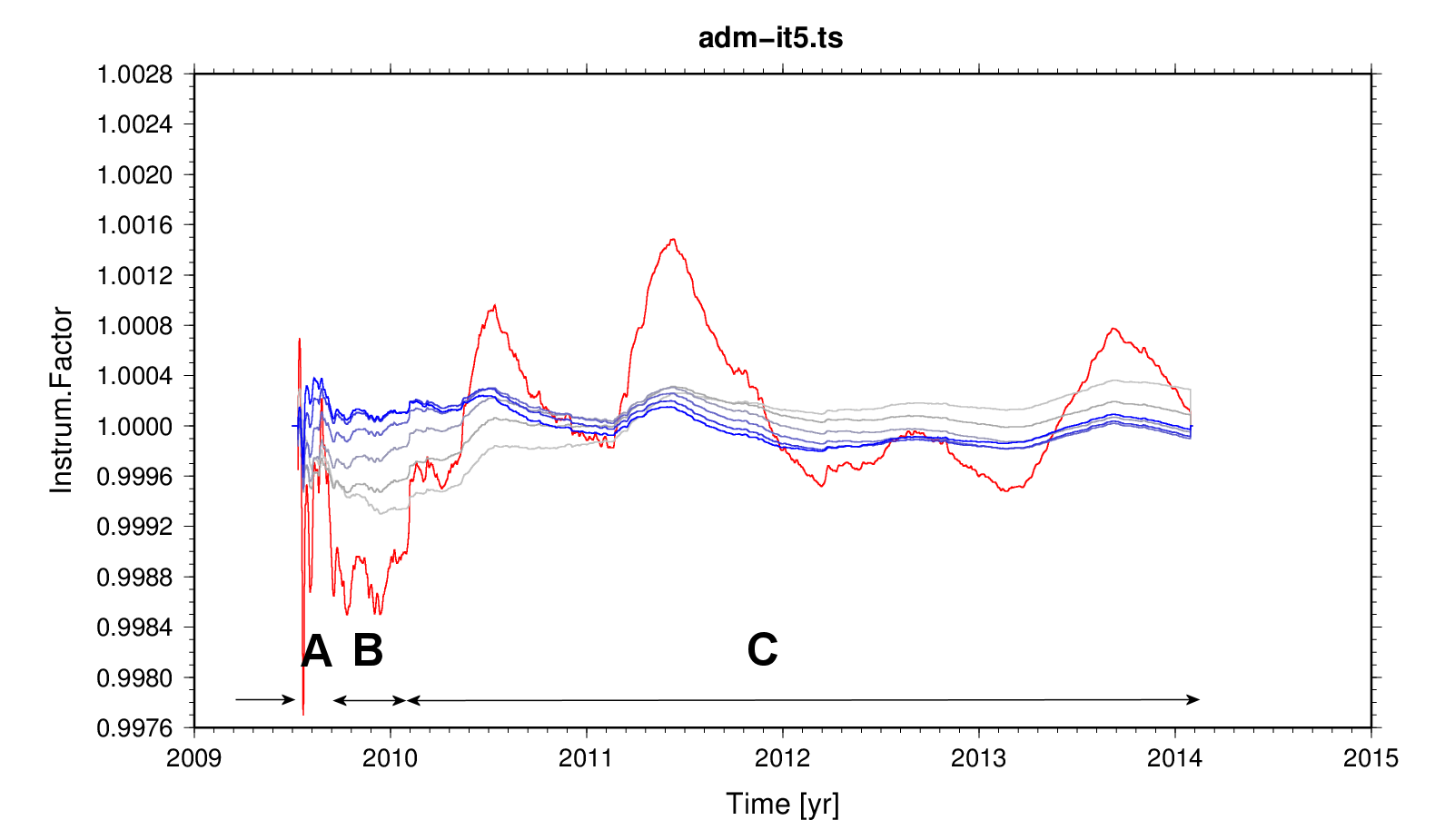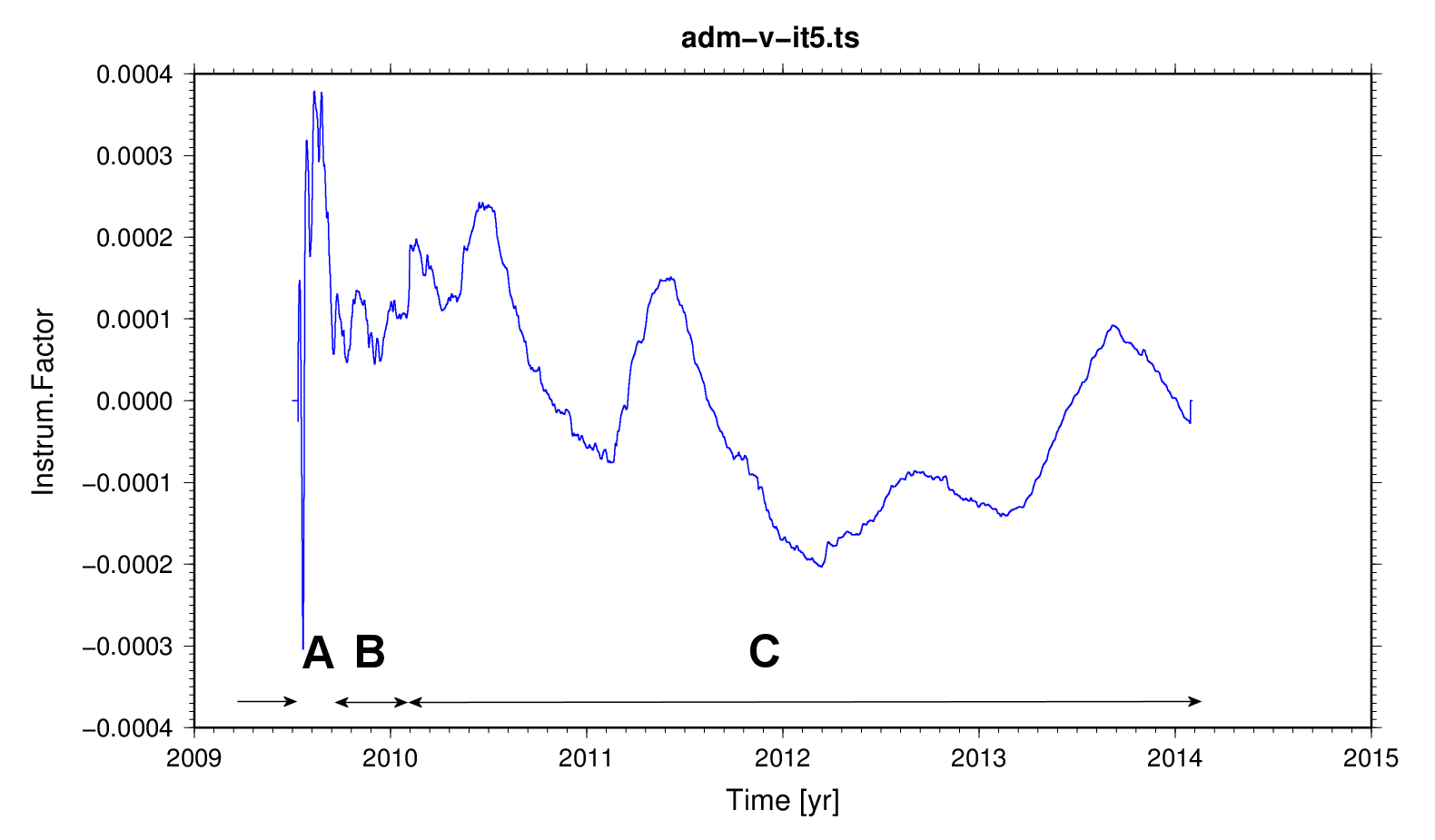
Figure 1 - Sliding-window admittance of average predicted tides w.r.t. observed tides.
Grey to blue: relative change per iteration. Red: final product. Three periods for the instrument factor can be distinguished: A - normal, B - low, C - normal again.
The behaviour of the instrument sensitivity is not well understood. Besides the annual periodicity, which might have a simple explanation.
 Figure 2 -
Iteration 5 with the time-derivative of the theoretical
tide. The annual periodicity might be attributed to
wave-group design and high-order tides. Period A appears
anomalous; however, consider that the annual peak in 2009
might already have been passed, and the pressure control
circuit (which appears to be the reason for the lower
sensitivity and, b.t.w., a profoundly different drift
signature) may have started to malfunction at the beginning
of period B.
Figure 2 -
Iteration 5 with the time-derivative of the theoretical
tide. The annual periodicity might be attributed to
wave-group design and high-order tides. Period A appears
anomalous; however, consider that the annual peak in 2009
might already have been passed, and the pressure control
circuit (which appears to be the reason for the lower
sensitivity and, b.t.w., a profoundly different drift
signature) may have started to malfunction at the beginning
of period B.